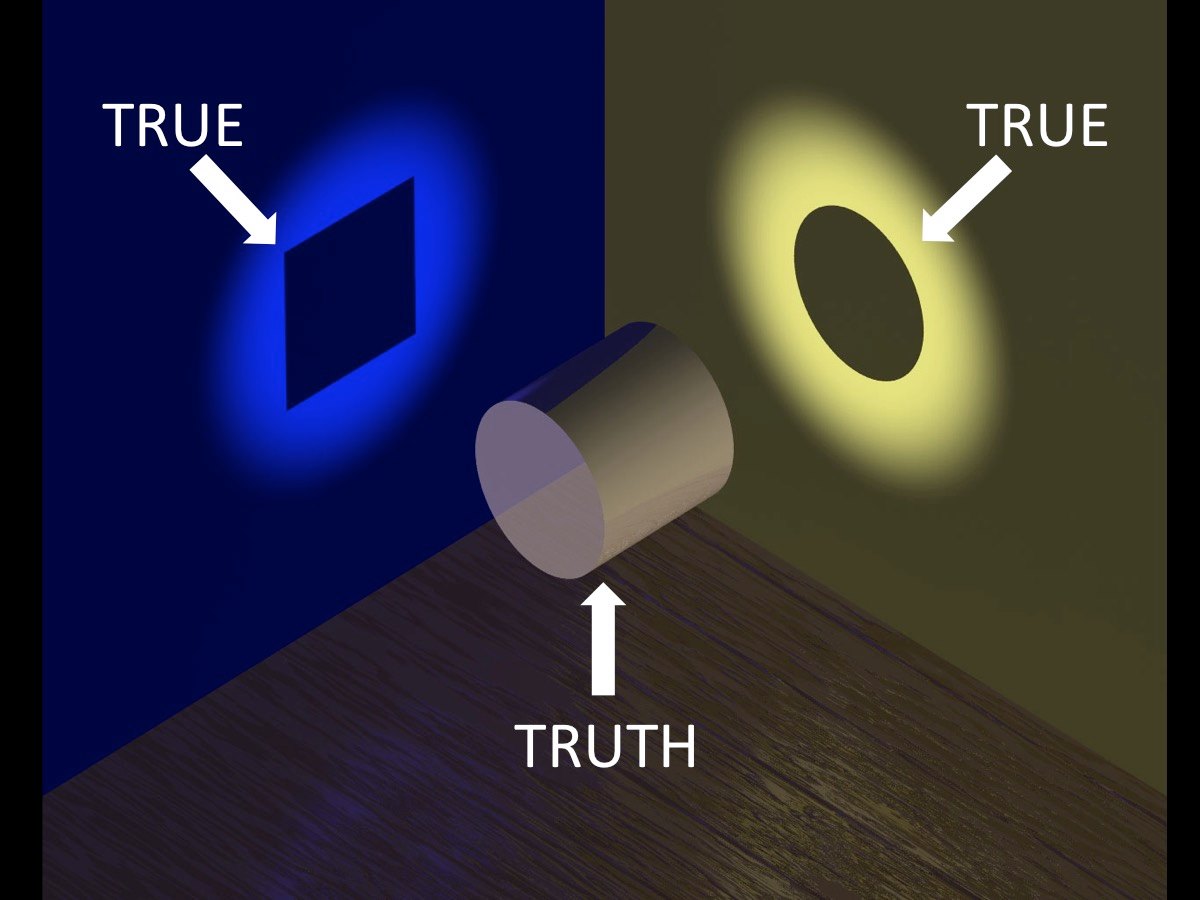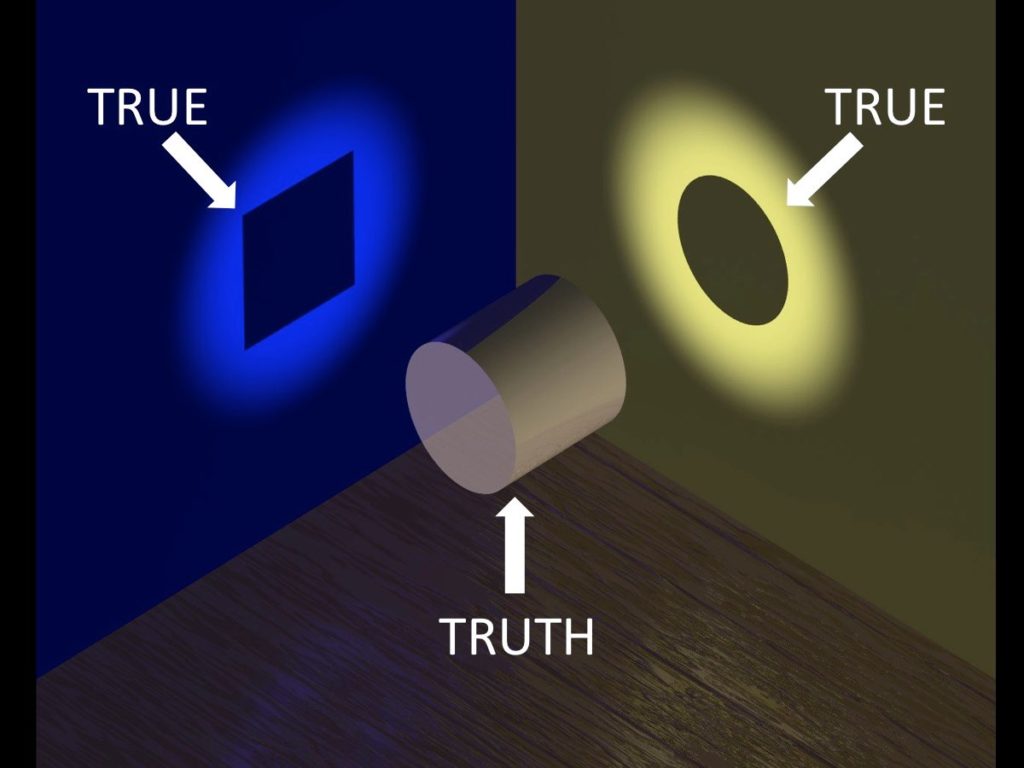When the world turns sideways and upside-down it can be helpful to step back and orient to a reality that hasn’t changed and that still makes sense so that we can discern the best path forward. The COVID-19 pandemic is revealing a lot of unknowns, but it’s also revealing a lot of truths that are simply not new even if our awareness of them is new.
We have always had at least as many non-human cells in our bodies as human cells [1], and we have just begun to understand how this ecosystem of viruses, bacteria, archaea, fungi and protists affects our experience of being human. Viruses have always had the possibility of causing a permanent and undesirable change in our bodies. That’s not new. One of my closest friends has adult-onset, Type 1 diabetes that her doctors explained could have been her body’s response to contracting Mumps in her 20s following, apparently, an ineffective vaccination. It’s not new that there is a space in between science in which new discoveries are made. In this gap is the varied ways our bodies respond to illness and the awe-inspiring mechanisms that we have on board to fight off illnesses and recover from them. This particular virus and the particular disease that it causes is attention-demanding because it’s new to us and the longer-term harm is still becoming known. As such, it warrants our attention, care and consideration in a new and different way…and…yet…it’s important to hold a discussion of this virus and the illness that it causes in the context of a broader perspective of what it means to be human.
The leading cause of death in Whatcom County, where I live, is heart disease. Between 1998 and 2002, 6102 Whatcom County residents died from this disease [2]. These deaths average to 1220 per year. 37% of these deaths (which amounts to 451 deaths) were heart disease. 48% of those who died from heart disease died from a form “caused by the build-up of fat deposits in the body’s major blood vessels [that] is generally considered to be preventable through a healthy diet, adequate exercise and no tobacco use.” That means that around 216 people die each year from diet and lifestyle choices.
COVID-19 hit Whatcom County in March. Since then, as of July 26, 2020, we have had 37 deaths. This number reflects the care and consideration of our local and regional governance to implement measure to prevent spread in a way that has allowed our medical system to remain resourced. If we extrapolate 37 deaths over 5 months then we get 88 deaths this year, in Whatcom County, from COVID-19. Compare the 88 deaths from COVID with the 216 deaths from preventable heart disease and ask yourself: Why aren’t we as concerned about the impacts of our diet and lifestyle as we are about the impacts of COVID-19? (Then perhaps throw global warming into the mix, just for fun.)
As we consider schooling this fall and all of the big emotions swirling around risks and potential consequences, let’s keep in mind a broader perspective that COVID-19 is not the only risk facing our society. If we continue to tank our economy then we put ourselves more and more into a position of needing to fuel economic recovery. In a fossil-fuel driven economy, it’s reasonable to expect that we may choose to double down on our investments in fossil fuels as a strategy for building economic recovery. The result would be a doubling down on fossil fuel emissions and an amplification of all of the harmful impacts that we are starting to witness as a result of human-induced climate change. As we consider if we can afford the risk of sending our kids back to school this fall, I think we also need to consider whether we can afford the risk of NOT sending our kids back to school this fall.
The truth is that income disparity is a big thing in our country and public schools are an important resource for helping to overcome this disparity [I don’t have the data on this but see reference 3 for a discussion]. Getting our kids back to school, helping families get back to self-resourcing, helping kids learn…these are all big gateways to overcoming income disparity and opening up possibilities for a future good.
Is there a way to reconcile all of these varied risks? I think there is. I think a good first step is to consider ourselves in community with each other and to look for ways to “power with” rather than “power over.”
There is a legacy of white supremacy around creating conditions of harm and then forcing people to work in them. We witnessed this legacy play out in our president’s behaviors and actions when he promoted a 4th of July celebration without requiring or encouraging mask wearing and then followed this celebration a few days later by saying that schools must open in the fall. It’s no wonder that teachers are scared to go back to school under these conditions [4]. We know that ~60% of COVID-19 transmissions are asymptomatic and that mask wearing can reduce transmission by 6-fold (I’m working on getting the research on this. My source is Dr. Mark Hyman’s Facebook livestream [5]). If a leader wants to take a stand for mandating school openings without imposing harm on those who work in these schools then the informed decision would have been to either abstain from celebrating in the form of a large gathering or to require masks in a large gathering in order to prevent the spread of this virulent illness. The approach of this administration’s leadership to enable and encourage conditions of harm and then advocate for people to work in these conditions is not one that I’m advocating for here.
What I’m advocating for is that we all take seriously our responsibility for stopping the spread through a combination of physical distancing and mask-wearing. This behavioral change applies to everyone, but I want to speak directly to the 20-39 year olds who are neither physically distancing nor wearing masks and, as a result, who are creating the highest number of positive tests by age group (namely 35% [6]) and who were allegedly the cause of an outbreak in June after holding a few, un-masked, indoor house parties of 50+ people in late May. If there is a 20- or 30-something year old out there who is reading this and who has leveled blame on Baby Boomers for not responding appropriately to the information on human-induced climate change then this is your time to shine! This is your moment to show us how it’s done. Show us how to modify actions and behaviors in response to an ambiguous social good that may not directly impact your life by wearing masks and abstaining from large, social gatherings. Lead by example an ability to choose actions that help protect a future good for someone else even if it risks criticism and social out-casting from your friends or family. Or, at least, perhaps you can now empathize with the fact that the greatest challenges facing humanity are not from entities beyond ourselves (including COVID) but from harmful habits and beliefs that we are choosing to carry forward and the consequences of those choices.
We are capable of rising to this occasion and making different choices. We are capable of preventing a future harm. This illness has harmful outcomes that are attention-demanding, still unknown and worthy of our respect and consideration; yet, we need to put the risks from this disease in context with the risks that we willfully participate in on a daily basis because we have normalized them.
As we consider how to move forward under conditions of an external harm that is (in some ways) beyond our control, let’s be sure to pay attention to nourishing conditions that are in our control by:
- wearing masks in situations where physical distancing is not an option in situations outside our “bubble”
- keeping gatherings small
- not attending large, in-house, gatherings
- Eating real food and mostly vegetables
- Exercising
- Not smoking
- Getting good sleep
- Reducing stress through mindfulness and meditation practices
Thank you for playing with me the game of “How can I/we do better?”

Resources:
[1] https://en.wikipedia.org/wiki/Human_microbiome
[2] https://www.whatcomcounty.us/DocumentCenter/View/1503/2004-Report-on-Causes-of-Death-PDF?bidId=
[5] https://www.facebook.com/watch/?v=721896768593656
[6] https://www.whatcomcounty.us/3427/COVID-19-Data
Others tid bits:
https://www.doh.wa.gov/portals/1/Documents/Pubs/345-271-ChronicDiseaseProfileWhatcom.pdf
Copyright (2020) by Rachael D. Mueller according Creative Commons Attribution-NonCommercial-ShareAlike 4.0 International
https://creativecommons.org/licenses/by-nc-sa/4.0/legalcode
